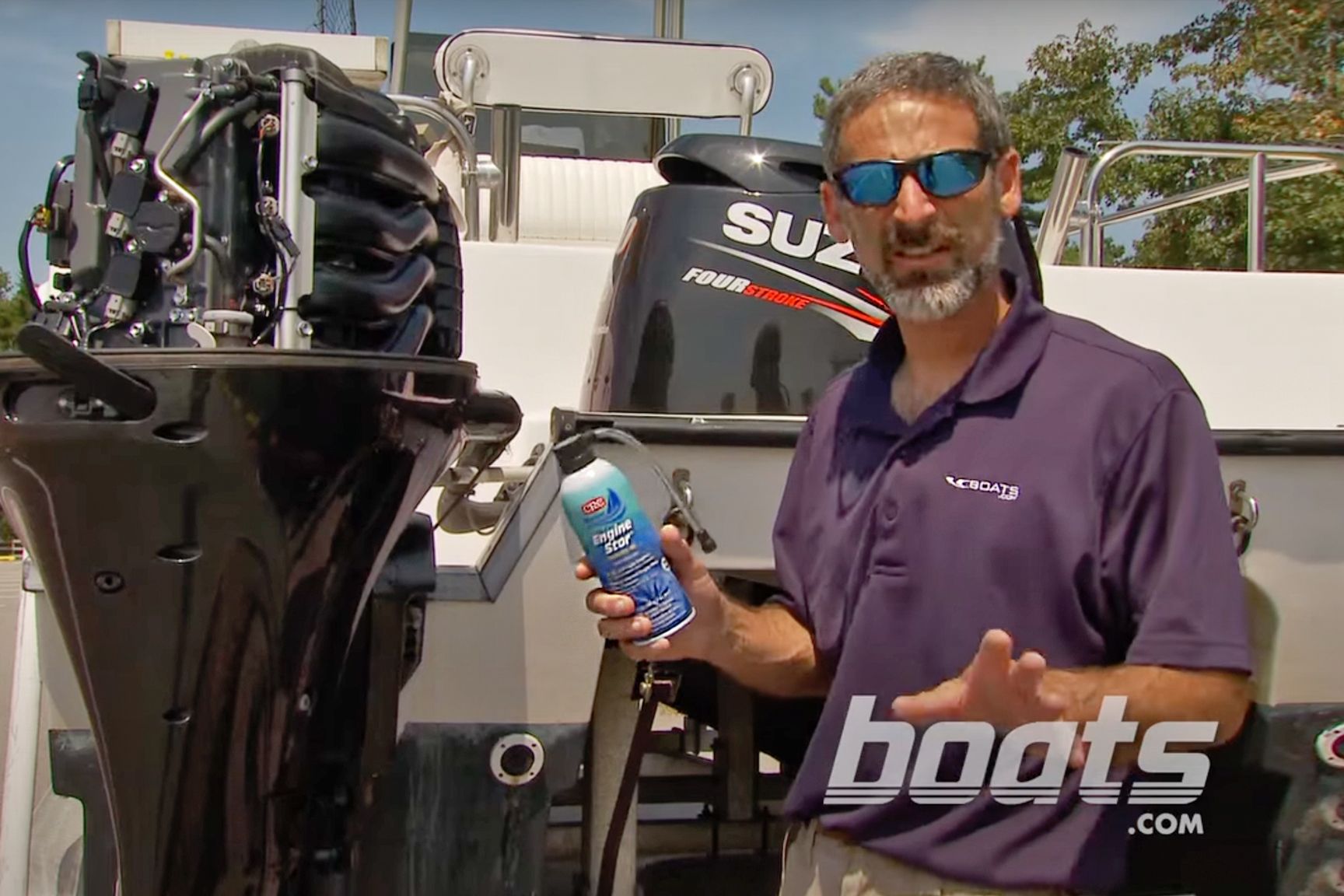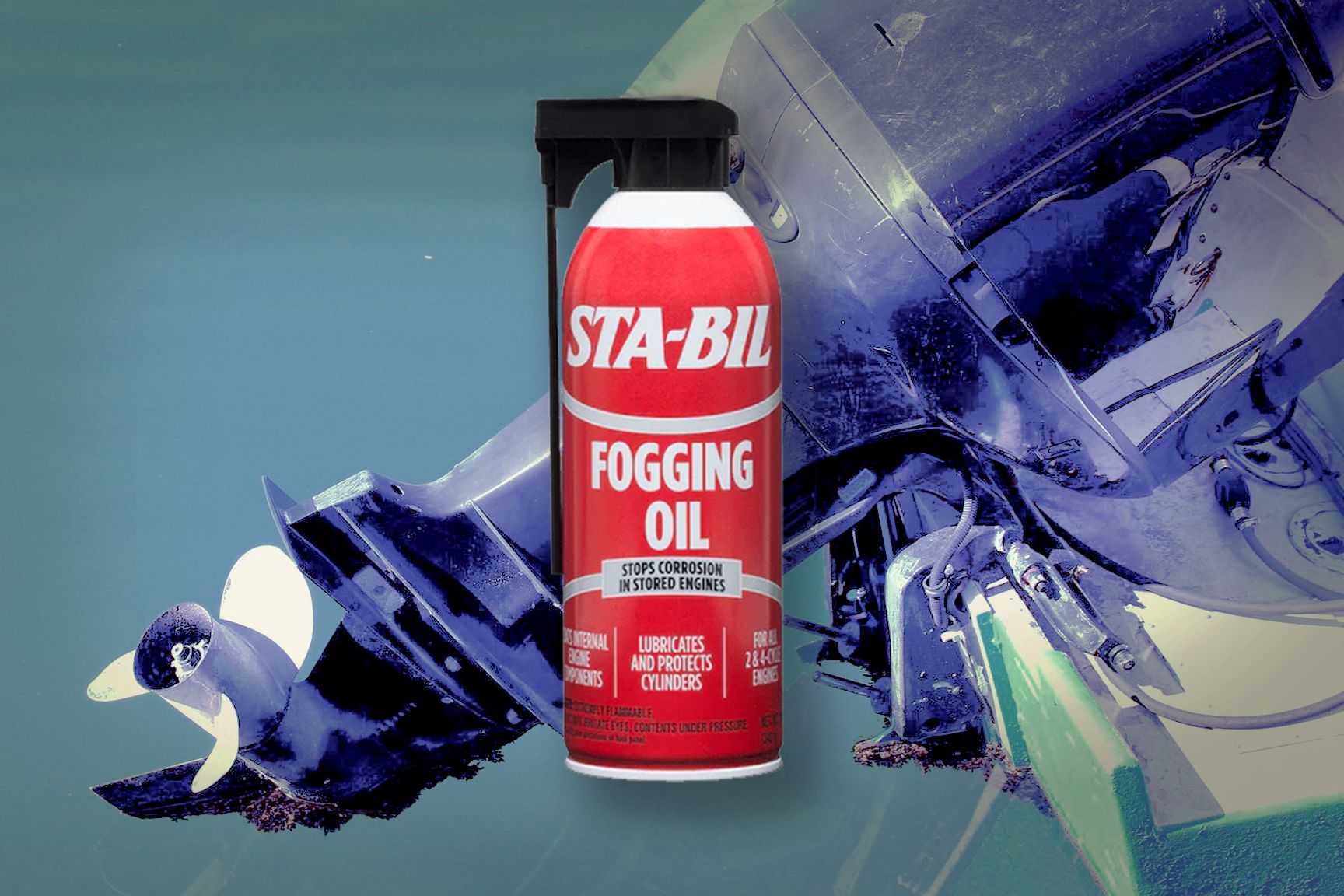Fogging an Outboard Engine: Step-by-Step Guide
A detailed guide to fogging your outboard engine to protect it against rust and corrosion.
Properly maintaining your outboard engine, including fogging, is a critical step for ensuring its longevity and optimal performance. Fogging the engine protects it against rust, corrosion, and the buildup of harmful deposits. In this article, we'll cover everything you need to know about fogging an outboard engine: selecting the right fogging oil, the step-by-step process for fogging, where and how to store the engine, and why this procedure is essential for extending your engine’s life.

Above: Lenny Rudow with boats.com explains how to fog an outboard engine with fogging oil in a YouTube tutorial video. Image by boats.com.
1. Choosing the Right Fogging Oil
Selecting a high-quality fogging oil is essential, as not all oils offer the same level of protection. Here are some factors to consider:
- Compatibility with Your Engine Type: Some fogging oils are designed specifically for two-stroke or four-stroke engines, so check the product label to ensure compatibility.
- Rust and Corrosion Inhibitors: Look for fogging oils that contain anti-corrosion properties. These inhibitors are crucial to prevent rust, especially in engines exposed to moisture during winter storage.
- Easy Application: Some fogging oils come in aerosol cans with specialized nozzles, making application straightforward and even. Aerosol fogging oils are generally easier to work with compared to pour-in oils.
- Brand Reputation: Well-known marine brands, like Mercury, Yamaha, and CRC, offer reliable fogging oils specifically formulated for marine engines. These are often worth the extra investment.
Some of the best outboard fogging oil on the market include popular fogging oil brands such as Sta-Bil Fogging Oil, Yamaha Storage Fogging Oil, and CRC Marine Fogging Oil. Each of these options provides a protective coating that helps to prevent internal damage and corrosion during the off-season.

Above: STA-BIL Fogging Oil for outboard engines. Composite Image by STA-BIL/Pond5 by boats.com.
2. How to Properly Fog an Outboard Engine
Once you have the right fogging oil, it's time to begin the fogging process. This procedure should be done carefully to ensure full coverage and protection of the engine's internal components.
Above: Lenny Rudow explains winterizing an outboard engine—noting that many gearheads and outboard mechanics now say that modern four strokes don't need to be fogged as long as you start them every 3-4 weeks.
Below are the steps to follow for fogging your outboard engine properly:
Step 1: Warm Up the Engine
Before applying fogging oil, start the engine and allow it to run for 5-10 minutes. This warms the internal components, making it easier for the fogging oil to adhere and penetrate. Running the engine also helps burn off any excess fuel in the carburetor.
Step 2: Disconnect the Fuel Source (for Two-Stroke Engines)
For two-stroke engines, it’s recommended to disconnect the fuel line after warming up the engine. Let the engine run until it uses up any remaining fuel in the carburetor and stalls. This ensures there is minimal fuel residue left in the carburetor, injectors or fuel lines, which can become stale over the winter months.
Step 3: Spray Fogging Oil into the Air Intake
With the engine running at a low idle, spray the fogging oil directly into the air intake or carburetor. Continue spraying until you see a noticeable amount of white smoke coming from the exhaust, which indicates that the oil is circulating and coating the engine's internal components.
For engines with multiple carburetors or throttle bodies, be sure to apply the fogging oil to each intake evenly. This might require you to adjust the nozzle or use an extension straw to reach each intake.
Step 4: Apply Fogging Oil Through the Spark Plug Ports (for Extra Protection)
To ensure maximum protection, you can add an extra layer of fogging oil directly to the cylinders. Here’s how:
- Turn Off the Engine and remove the spark plugs carefully.
- Insert the nozzle of the fogging oil into each spark plug port and spray for a few seconds.
- Rotate the flywheel by hand to help distribute the oil evenly throughout the cylinders.
- Replace the spark plugs without over-tightening them, ensuring they're properly seated.
This additional step is particularly useful for engines that will be stored for an extended period in cold or damp environments.
Step 5: Wipe Down the Engine Exterior
Use a cloth and a light mist of fogging oil or a specialized marine corrosion inhibitor spray to wipe down the engine’s exterior. This will protect exposed metal parts, including bolts, nuts, and the lower unit, from rust and corrosion. Some will use a product such as WD-40 lubricant for this purpose although it may attract dust in storage.
3. Where and How to Store the Engine
Proper storage of the engine is just as important as fogging it. Here are key considerations to ensure the engine is stored in an optimal environment:
Location: Indoors vs. Outdoors
- Indoors: Storing the engine indoors in a dry, temperature-controlled environment is ideal. This keeps it safe from moisture, extreme temperatures, and potential damage from pests or rodents.
- Outdoors: If indoor storage is not an option, cover the engine securely with a high-quality, waterproof cover. The cover should be breathable to prevent condensation from accumulating underneath.
Positioning the Engine
For outboards, store the engine in an upright position. This helps prevent any residual water from pooling in areas that could freeze and cause damage.
Moisture Control
Use moisture-absorbing products, like silica gel packs or dehumidifiers, in your storage area to reduce the risk of corrosion. Ensuring a dry storage environment helps prevent rust from forming on metal parts and sensitive components.
Battery Storage (If Applicable)
If your outboard has an electric start, disconnect the battery and store it separately in a cool, dry place. Batteries should be charged periodically to maintain their longevity over the winter months.
4. Importance of Fogging to Extend the Life of Your Outboard Engine
Fogging is a preventive maintenance practice that can have a significant impact on the longevity and performance of your outboard engine. Here’s why it’s crucial:
Protection Against Rust and Corrosion
Marine engines are naturally exposed to saltwater and moisture, which can lead to corrosion over time. Fogging oil creates a protective barrier that prevents rust from forming on vital components, such as the cylinders, pistons, and crankshaft.
Minimizing Internal Damage
Without fogging, metal components inside the engine are more susceptible to oxidation, which can cause pitting and scoring on cylinder walls. This damage not only reduces performance but can also lead to costly repairs. Fogging the engine prevents these issues by coating the metal surfaces with a layer of oil that seals out air and moisture.
Reduced Carbon Buildup
Fogging oil helps dissolve and prevent carbon deposits on pistons and valves. Over time, these deposits can restrict airflow and reduce fuel efficiency, leading to poor engine performance and increased fuel consumption. Fogging prevents these deposits from hardening, making it easier to remove them during regular maintenance.
Preventing Stale Fuel from Damaging the Engine
For two-stroke engines, fogging protects the carburetor and fuel system from any stale fuel that could have been left behind. This keeps the engine ready to fire up in the spring without any clogging issues or difficulty starting.
Extending Engine Life and Reducing Repairs
Fogging is one of the best ways to extend the life of your outboard engine by protecting its internal components from harsh winter conditions. Regular fogging can help avoid costly repairs and maintenance, keeping your engine running smoothly for years.
Final Thoughts
Fogging an outboard engine is an essential part of winterization and long-term maintenance. Choosing the right fogging oil, following the correct fogging process, and storing the engine in a suitable environment will ensure your engine stays in peak condition and starts up without issues when spring arrives. With these preventive steps, you’ll not only preserve your outboard’s performance but also protect your investment, allowing you to enjoy more trouble-free boating seasons ahead.
By adding fogging to your maintenance routine, you’re taking proactive steps to enhance the engine’s durability and reliability. Consider it an investment in your engine’s future – ensuring smooth, powerful performance every time you’re out on the water.












